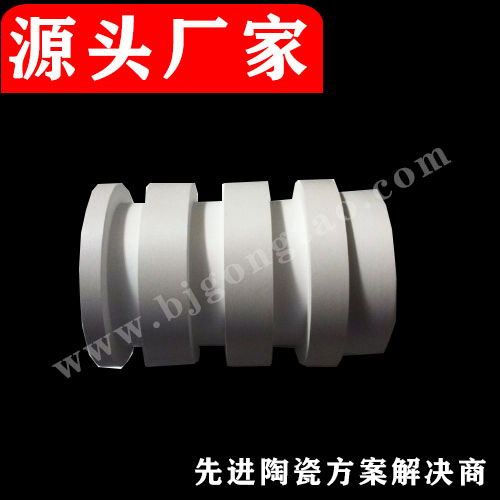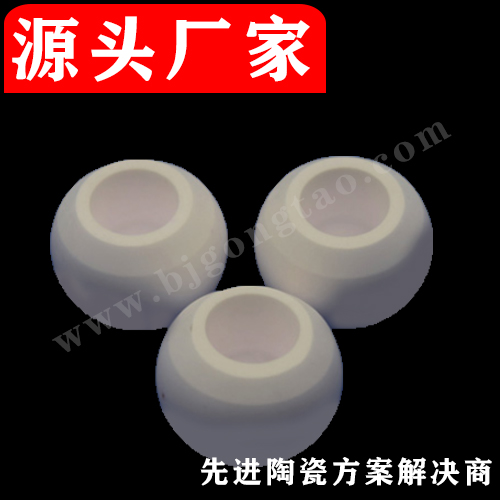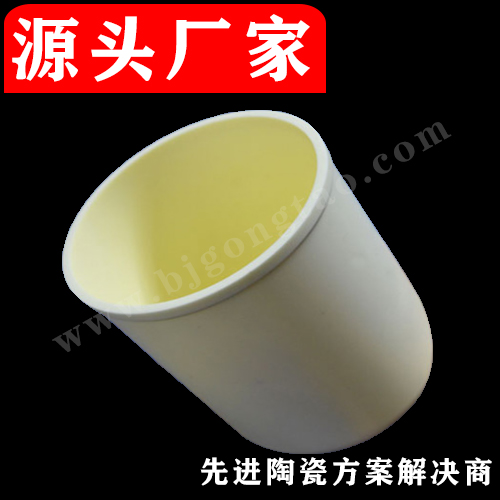
Suzhou Kaifa New Material Technology Co., Ltd.
Email:heqing@szkfxc.com
Email:sales@szbknm.com
Email:bkxc.bonnie@gmail.com
The crystal structure of boron carbide
Boron carbide has a high melting point (2450℃), high hardness (second only to diamond and cubic boron nitride, ~29.1GPa), high elastic modulus, low density (2.52 g/cm3), good thermal stability, The thermal neutron absorption cross section (6×10-22 cm-2) has high advantages, and it is a special ceramic hard material with excellent performance. Boron carbide has many unique properties and is an important candidate material in many engineering applications. It is widely used in refractory materials, abrasive media, wear-resistant coatings, reactor control rods and shielding rods, and light armor. .
1 Polycrystalline boron carbide
The atomic structure of boron carbide has been extensively studied, and its main structural unit is an icosahedron composed of 12 atoms (space group R 3 — m), and a three-atom chain connected to the icosahedron (along Along the axis of the rhombic hexahedron [111], as shown in Figure 1). This structure can also be described as a hexagonal structure. The [0001] axis of this hexagonal lattice corresponds to the [111] direction of the rhombohedron (Figure 1).

Figure 1 Schematic diagram of boron carbide cell
The binary phase diagram of the BC system is highly controversial and is constantly being discussed and revised. In addition to pure B and pure C, there are eight different compounds in the BC system. The only consensus is that there is a non-stoichiometric boron-rich compound, which is a rhombohedral structure. The lattice constants of these compounds are very similar, only the stoichiometric composition is slightly different, so they are commonly referred to as "boron carbide" and the chemical formula is written "B4C".
1.1 BC phase diagram
Although many scholars have proposed different versions of BC phase diagrams, the commonly used BC phase diagrams are those predicted by Ekbom and Beauvy, see Figure 2. Although there is still some controversy about the BC phase diagram, it can be determined that the solid solubility of C in boron carbide in the stable phase is very broad, and the concentration of C is evenly distributed in the range of 8% to 20% (atomic fraction, the same below) This indicates that there is a replacement solid solution in the crystal.

Figure 2 BC phase diagram: (a) Ekbom predicted phase diagram; (b) Beauvy predicted phase diagram
1.2 Crystal structure of boron carbide
In the 1990s, researchers carried out Raman and infrared experimental studies, and believed that boron carbide should be composed of (B11C), (B12) icosahedron and CBB, CBC and other three-atom chains, and analyzed by infrared absorption spectrum data The statistical distribution of these constituent units is studied, as shown in Figure 3.

Fig. 3 Statistical distribution of boron carbide constituent units
Already discussed boron carbide C concentration is usually distributed in 8% - 20% range, while preparing Institute who had C concentrations of up to 24% of B . 11 . 4 C 3 . 6 compounds. Some scholars believe that in addition to having a CBC linear chain , boron carbide should also contain (B 11 C) , (B 10 C 2 ), and (B 9 C 3 ) icosahedral structures. It is because of (B . 9 C . 3 ) the CBC presence makes the C concentration of up to 24% , whereas (B . 9 C . 3 ) the CBC inThe C concentration is 33% , which contradicts traditional academic views. Due to the mutual constraint of the chemical bonds within the icosahedron, only a maximum of two B atoms in the icosahedron can be replaced by C atoms. It can be speculated that the maximum C content in boron carbide will not exceed 25% , and the corresponding structure at this time should be ( B 10 C 2 ) CBC .
The relationship between the change of boron carbide crystal structure and C concentration has not yet reached a unified consensus in the scientific community. It is generally accepted that the change in C concentration in boron carbide‘s rhombohedral lattice is mainly due to the substitution of C atoms for B atoms in the lattice , and the main academic disagreement is whether C atoms preferentially replace 20 The position of the B atom in the facet is still preferred to replace the position of the B atom in the triatomic chain . Some scholars have considered the entropy value and energy value, speculating that this kind of atomic replacement will occur preferentially in the three-atom chain. According to this point of view, the number of CBB atomic chains in boron carbide crystals will increase significantly, and even the crystals may be entirely composed of (B 11 C) CBB unit structures, and the corresponding stoichiometric ratio is B 6 . 5 C , the concentration of C is 13 at this time . 3% . For the case of lower C concentration, this atomic substitution will occur in the icosahedron, the ideal (B 12 ) CBB configuration is the crystal structure with the highest boron content, and the stoichiometric ratio is B 14 C, C concentration is 6 . 7% .
In most experimental studies and theoretical calculations of boron carbide structures, in order to simplify the problem, the presence of free carbon was not considered when synthesizing boron carbide. In fact, when the concentration of C is higher than 20% , stable boron carbide and carbon should be mixed ; when the concentration of C is as high as 30% , this mixture will have a eutectic point at 2350 ℃ or 2240 ℃ ; and when C When the concentration is less than 8% , the stable low- C phase is in solid solution in boron carbide and pure boron. Other researchers have systematically characterized hot-pressed boron carbide ceramics, and believe that all polycrystalline boron carbide contains impurities in the form of free carbon and inclusions of amorphous carbon or granular graphite.
As can be seen from the above, because there is no clear relationship between the temperature and the phase boundary, it becomes difficult to evaluate the BC phase diagram thermodynamically . And because traditional experiments can not be used to easily judge the phase diagram of the equilibrium state, many scholars have used density functional theory (DFT) to study this. As a result, two stable boron-rich phases were found. One is the ideal stoichiometric B13C2 , namely B6 . 5C , it is a rhombohedral symmetric structure ; the other is the ideal stoichiometric B 12 C 3 , that is, B 4 C , which is a monoclinic symmetric structure.
Although B 13 is C 2 ( i.e., B . 6 . . 5 C) , and B 12 is C . 3 ( i.e., B . 4 C) is the most stable boron carbide two structures, these compounds can be obtained by the symmetry of the diffraction experiments. However , the distribution of C and B atoms in these structures is not completely determined, because the electron density of boron and carbon and the nuclear scattering cross sections ( 11 B and 12 C) are very similar, it is difficult to pass existing characterization techniques ( such as X -ray Diffraction or neutron diffraction technology ) accurately distinguish the occupation of boron and carbon atoms, which has caused difficulties in experimental research, and scientists are still constantly exploring and researching.
1.2.1 B 12 C 3
The crystal structure of B 12 C 3 is rhombohedral, the space group is R 3 — m, and the lattice parameter a=5 . 16A , α = 65 . 7 °. In the existing research results, these lattice constants are basically similar, with no obvious differences.
When one C atom in B 12 C 3 replaces the B atom in the icosahedron, the rhombohedral structure is slightly twisted, the symmetric structure is broken, and the crystal symmetry is reduced to become a monoclinic system. Therefore, in theoretical research, B 12 C 3 is often studied as a hexagonal crystal system . The lattice constant a of the hexagonal structure of B 12 C 3 is about 5 . 59 A and c are about 12 . 07A .
The smallest unit cell of boron carbide consists of 15 atoms and contains a linear chain of icosahedrons and three atoms. Some scholars first proposed that B 4 C is composed of B 12 icosahedron and CCC atomic chain, namely B 12 (CCC) . However, a series of subsequent studies showed that there are B atoms in the triatomic chain, and its structure should be that the C atoms in the middle of the CCC have been replaced with the B atoms in the icosahedron , namely B 11 C(CBC) , in the triatomic A strong electrostatic binding force is formed between B and C on the chain due to the difference in charge.
The study results showed, B 12 is C . 3 is a C replacement atom icosahedral (B 12 is ) one of the B atom to form a (B . 11 C) the CBC structure, however, the position of the atoms in the icosahedron can be divided into Two categories : (1) pole position. Position of the triangle located at the top or bottom of the icosahedron, which is the exact opposite terminal icosahedron, and the six positions are connected to the other pole of the icosahedron, FIG. 4 in . 1 - . 3 atoms on the pole (Polar-up) position . 4 - . 6 for the next pole (Polar-down) position ; if C atoms alternative extreme position B atoms, may be referred to as (B . 11 C P ) . (2) Equatorial position. Six at the equatorial positionThe B atom is connected with a linear three-atom chain. As shown in Fig. 4 , the 10 , 12 , and 14 atoms are at the upper equator (Equatorial-up) position, and the 11 , 13 and 15 atoms are at the lower equator (Equatorial-down) position. If the C atom replaces the B atom at the equatorial position , it can be written as (B 11 C e ) .
A large number of theoretical calculation results show that the C atom replaces the B atom at the pole position of the icosahedron , and the formed pole structure (B 11 C p ) (CBC) is lower than the equatorial structure (B 11 C e ) (CBC) . Energy, the enthalpy of the structure is the smallest, and it has better structural stability. Some scholars believe that because the C atom in B 4 C does not have a fixed position, and the C atom can randomly replace the B atom in the six pole positions, the structure of B 4 C is disordered. The experiment found that this disorder phenomenon is in a certain way. To a certain extent, it can repair the symmetry of B 4 C. In addition, B . 4 C in the presence of a further bipolar defects (Bipolar Defect) , i.e. in the presence of a two-pole icosahedral C atoms, but not adjacent icosahedral C pole atoms, can be written as (B10 C P 2 ) (the CBC) , wherein (B 10 C P 2 ) of the two C atoms are located in an icosahedral opposite pole position (the Polar Site) . And B4C structure includes about 95% of B 11 C p (CBC) , about 2 . 5% of B 12 (CBC) and about 2 . 5% of B 10 C P 2 (the CBC) structural units. At present, most experimental and theoretical studies believe that the B 11 C p (CBC) model is the preferred B 4 C structure ( superscript p indicates that the C atom is located at the pole position in the icosahedron ) . Figure 4 shows a typical B 11 C p (CBC) structure.

Figure 4 Schematic diagram of the position of atoms in the B 11 C p ( CBC ) structural unit of B 12 C 3 (green is B atom, brown is C atom)
1.2.2 B 13 C 2
Over B 13 is C 2 ( or B . 6 . . 5 C) compound is rhombohedral symmetry structure, consisting essentially of (B 12 is ) the CBC , wherein the central three-atom chain C atom is B substitute atoms. Although Ab initio calcuation theoretical research found that the energy of B 12 (CBC) structure is much lower than that of B 11 C (BBC) , it can exist more stably. However, other scholars have used X -ray diffraction and Raman spectroscopy to prove that the B 11 C e (BBC) structure does exist in the B 13 C 2 compound at the same time ( superscript e indicates that the C atom is located at the equatorial position in the icosahedron) .
Some scholars have conducted a more systematic study using the neutron powder diffraction method and believe that there are more complex types of defect structures in B 13 C 2 . Since then, some scholars have studied and believed that in addition to the above two constituent units , B 13 C 2 compounds should also have B 10 C 2 structural units. In recent years, some scholars have proposed that B 13 C 2 should be composed of B 11 C (CBC) , B 12 (CBC) and B 12 (B 4 ) . In general, most scholars believe that B 13 C 2 contains two components, B 12 (CBC) and B 11 C (BBC) , and this conclusion is generally accepted.
1.3 Lattice constant of boron carbide
The primary cell of B 12 C 3 (that is, B 4 C) is an orthorhombic hexahedron, and the spatial lattice group is R 3 — m. Due to the replacement positions of B and C atoms, which breaks the symmetrical structure of the B 13 C 2 rhombohedron, it is often studied as a hexagonal crystal system during theoretical research. The lattice constant of B 4 C is shown in Table 1 .

Table . 1 B . 4 C lattice constant
In fact, the lattice constant of boron carbide and the bond length of the three-atom linear chain change with the change of C concentration, as shown in Figure 5 . The lattice constant a gradually decreases with the increase of C concentration, but the lattice constant c does not change, and gradually decreases after the C concentration is higher than 13% . The results of neutron powder diffraction measurement ( Figure 6) indicate that the bond length of the linear triatomic chain reaches a minimum when the C concentration is about 13% , which may be because the C concentration is about 13% to form a stable The correlation of B 13 C 2 leads to 13% becoming the turning point of the relevant data.

Figure 5 Experimental study of boron carbide lattice Changshu a and c

Figure 6 The bond length of the triatomic chain in boron carbide measured by the neutron powder diffraction method
This information originates from the Internet for academic exchange only. If infringement please contact us to delete immediately





